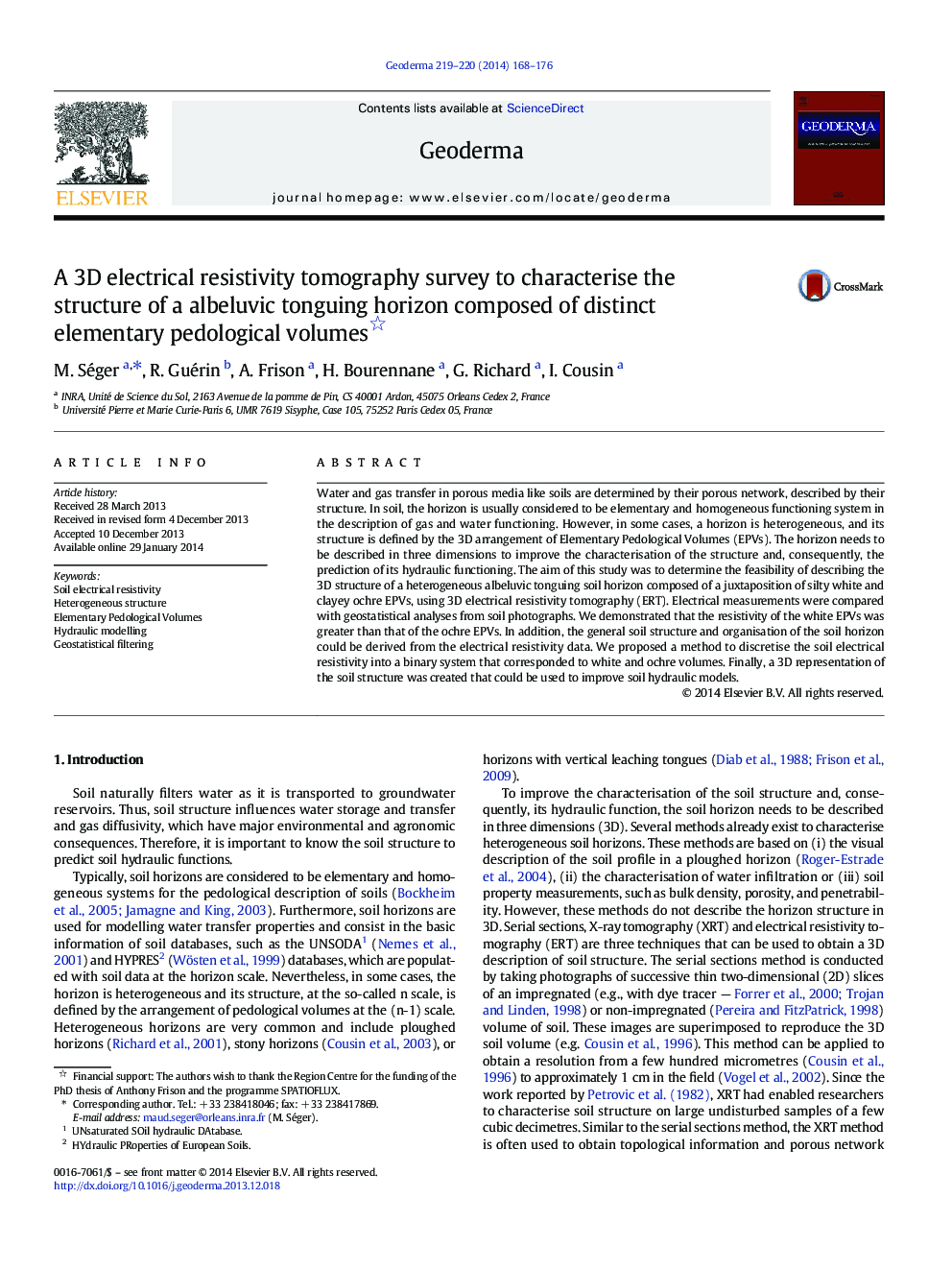| Article ID | Journal | Published Year | Pages | File Type |
|---|---|---|---|---|
| 4573384 | Geoderma | 2014 | 9 Pages |
•The structure of a soil horizon was studied with the use of the 3D ERT technique.•The soil structure was heterogeneous and composed of three dimensional volumes.•Electrical resistivity was efficient to locate large areas of pedological volumes.•Electrical resistivity was not efficient to determine exact local pedological geometry.•The local components improved the comparison between ERT and pictures.
Water and gas transfer in porous media like soils are determined by their porous network, described by their structure. In soil, the horizon is usually considered to be elementary and homogeneous functioning system in the description of gas and water functioning. However, in some cases, a horizon is heterogeneous, and its structure is defined by the 3D arrangement of Elementary Pedological Volumes (EPVs). The horizon needs to be described in three dimensions to improve the characterisation of the structure and, consequently, the prediction of its hydraulic functioning. The aim of this study was to determine the feasibility of describing the 3D structure of a heterogeneous albeluvic tonguing soil horizon composed of a juxtaposition of silty white and clayey ochre EPVs, using 3D electrical resistivity tomography (ERT). Electrical measurements were compared with geostatistical analyses from soil photographs. We demonstrated that the resistivity of the white EPVs was greater than that of the ochre EPVs. In addition, the general soil structure and organisation of the soil horizon could be derived from the electrical resistivity data. We proposed a method to discretise the soil electrical resistivity into a binary system that corresponded to white and ochre volumes. Finally, a 3D representation of the soil structure was created that could be used to improve soil hydraulic models.
